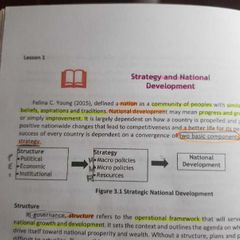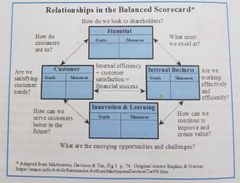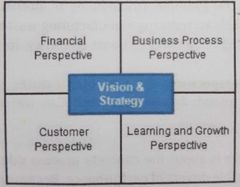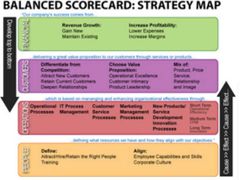![]()
![]()
![]()
Use LEFT and RIGHT arrow keys to navigate between flashcards;
Use UP and DOWN arrow keys to flip the card;
H to show hint;
A reads text to speech;
131 Cards in this Set
- Front
- Back
|
a community of peoples with similar or divergent beliefs, aspirations and traditions. |
NATION by Felina C. Young (2015) |
|
|
means progress and growth, maturity or simply improvement. |
National development |
|
|
FIGURE of STRATEGIC NATIONAL DEVELOPMENT |

|
|
|
It is largely dependent on how a country is propelled and pushed toward positive nationwide changes that lead to competitiveness and a better life for its people. |
National Development |
|
|
the success of every country is dependent on a convergence of two basic components: |
STRUCTURE & STRATEGY |
|
|
In governance, _____ refers to the operational framework that will serve as a basis for national growth and development. |
STRUCTURE |
|
|
It sets the context and outlines the agenda on which a nation can drive itself toward national prosperity and wealth. |
STRUCTURE |
|
|
Without these, it will be difficult to actualize. |
structure, plans and programs |
|
|
are implemented in the light of spearheading a country journey toward economic progress and wealth. |
stratagems |
|
|
3 Kinds of STRUCTURE |
PEI Political Structure Economic Structure Institutional Structure |
|
|
refers to the political system existing in the country. |
Political Structure |
|
|
when social equality exists, autocracy when dictators rule a nation or communism when control is collective or socialist. |
Democracy |
|
|
has claimed to have a communist/socialist political structure, it is not so as shown by the Increase in its capitalist's activities. |
China - combinations of these types (kinds of structure PEI) are deliberately and conveniently adopted as in the case of China. |
|
|
refers to how business is conducted in a nation. |
economic structure |
|
|
this includes consumption, investment, trade, and government. |
macro level |
|
|
In same developed countries like the Europe and the United States, consumption is _______ while Japan's trade in terms of exports and imports is _______. |
In same developed countries like the Europe and the United States, consumption is: - more than 50 percent of the gross domestic product while Japan's trade in terms of exports and imports is: - more than 100 percent of GDP. |
|
|
is reflected in a country's banking system. |
institutional structure |
|
|
military powers, and the rule of law. For example, financial systems need to be sound, the justice system should be fair and just, police powers should not be abused. bureaucracies should be efficient and free from corruption, labor unions should be reasonable, and management of resources should be monitored and controlled, |
justice system |
|
|
3 Kinds of STRATEGY |
Macro Policies Micro Policies Resources |
|
|
Macro Policies |
FMPC Fiscal Policy Monetary Policy Policy on Exchange Rate Country's Income Policy |
|
|
Micro Policies |
TFGECS Trade Policy Foreign Direct Investments or Investments Governments Economic Policies Competition Policy Subsidy Policy |
|
|
Resources |
NHTC Natural Resources Human Resources Technology Capital |
|
|
Macro Policies - FISCAL POLICY This can be any of the following: |
balanced budget surplus deficit |
|
|
means excess in budget |
Surplus |
|
|
means a shortfall in budget. |
Deficit |
|
|
depends on the government's spending policies. |
Budget surplus and deficit |
|
|
are set by the country's central bank to make possible growth of the supply of money at a given rate. |
Monetary policies |
|
|
are generally engaged in buying and selling of treasury bills to the public. |
Governments |
|
|
to finance the economic growth of a nation. |
one way of generating enough money |
|
|
Some countries allow their currency to float freely at market rates However, others control or fix their currency rates to prevent undue appreciation or depreciation. |
policy on exchange rate |
|
|
directly affects price and wages. |
country's income policy |
|
|
There is a direct correlation between these two economic variables. |
Price Wages
- When prices increase, higher wages are demanded. - When wages are increased, prices of goods generally increase, too. |
|
|
____ of a country involves the use of tariffs, quotas and other trade contracts that may carry certain limitations and restrictions. |
trade policy |
|
|
_____ from sources outside a nation bring about economic development. |
Foreign direct investments or investments |
|
|
Foreign direct investments or investments
With infused capital, jobs are ____ and business is ____. |
With infused capital, jobs are GENERATED and business is ENERGIZED. |
|
|
_____, for one reason or another, acquire businesses and these are managed by civil servants: However, most of these investments are not administered efficiently and effectively.Money leaks result through mismanagement, corruption, lack of competence, and disregard. As a result, government-owned corporations end up with huge unpaid loans, money shortage, or worst, they go bankrupt. |
Governments |
|
|
Thus, the government can come up with a policy on this continue their management or sell them to the private sector. Selling to individuals other than the government is called: |
privatization |
|
|
On the other hand, a government may decide to confiscate, buy, or take over an enterprise and manage it. This is called: |
nationalization |
|
|
are nationalized for specific reasons like controlling price, making sure there is equity, or seeing to it that there is no shortage. |
Businesses |
|
|
are formulated to ensure that the financial system of a nation is robust and that it is able to provide livelihood, education, welfare and quality of life for its people.
Nations invest on agriculture for food security. At times, they subsidize it. They take care of the environment like preserving marine waters and rainforests. They are sources of fishes, lumber, oil, and other resources. |
Economic policies |
|
|
zeroes in on the development of human and natural resources.
● PEOPLE are the greatest source of productivity in a nation. ● To make them competitive, a country should make sure that quality education is provided to its citizens. ● Hardworking, intelligent, and nationalistic people propel a country toward material prosperity. Thus, the emphasis is on knowledge workers, speaking of global languages, information technology competence, seafaring and tourism skills, leadership and managerial effectiveness, and positive personal qualities.
● This policy creates in people a degree of competitive advantage. |
Competition policy |
|
|
is used to help the population. ● The government shoulders a part of the price of a commodity to make it affordable. ● In certain instances, a country can do that when it has a surplus or it has funds for such support. |
subsidy policy |
|
|
are the most important supply of competitiveness. Oftentimes scarce, they can make or unmake a nation or bring them to prosperity or dearth. |
Resources |
|
|
consist of arable land, minerals, energy fuels, aside from aquatic life and forestlands. These resources should be harnessed to give people a better life. |
Natural resources |
|
|
include a population with adequate, if not the best, education and are highly skilled and healthy. ● Likewise, the number of people in a country can be positive and negative, positive in that there are more hands to till the land, to perform work, and earn a living. ● It is negative, in that it will mean having more mouths to feed, to shelter, to educate, and to spend on. |
Human resources |
|
|
is another resource. ● Research and development, advances in science, communication, information technology, manufacturing, and medicine, among others, significantly contribute to national advancement. |
Technology |
|
|
if invested wisely, can generate more employment, provide a better standard of living, and bring about an efficient exchange of goods, services, and wealth. ● Thus, there is a constant need to use resources efficiently. ● Doing all these can make a nation compete with foreign businesses and sustain itself comfortably. |
capital |
|
|
refers to a manager's potential to express a strategic vision for the organization, or a part of the organization, and to motivate and persuade others to acquire that vision. |
Strategic Leadership |
|
|
can also be defined as utilizing strategy in the management of employees. It is the potential to influence organizational members and to execute organizational change. |
Strategic Leadership |
|
|
create organizational structure, allocate resources and express strategic vision. |
Strategic Leaders |
|
|
work in an ambiguous environment on very difficult issues that influence and are influenced by occasions and organizations external to their own. |
Strategic leaders |
|
|
The main objective of strategic leadership is: |
strategic productivity |
|
|
Another aim of strategic leadership is to: |
develop an environment in which employees forecast the organization's needs in context of their own job. |
|
|
encourage the employees in an organization to follow their own ideas. |
Strategic Leaders |
|
|
make greater use of reward and incentive system for encouraging productive and quality employees to show much better performance for their organization. |
Strategic Leaders |
|
|
is about inventiveness, perception, and planning to assist an individual in realizing his objectives and goals. |
Functional strategic leadership |
|
|
requires the potential to foresee and comprehend the work environment. It requires objectivity and potential to look at the broader picture. |
Strategic leadership |
|
|
Qualities of Effective Strategic Leaders
● A few main traits/characteristics/features/qualities of effective strategic leaders that do lead to superior performance are as follows: |
LKJ WMC SSS RAC
Loyalty Keeping them updated Judicious use of power
Wider perspective/outlook Motivation Compassion
Self-control Social skills Self-awareness
Readiness to delegate and authorize Articulacy Constancy/Reliability
|
|
|
Powerful and effective leaders demonstrate their ____ to their vision by their words and actions. |
Loyalty |
|
|
Efficient and effective leaders keep themselves updated about what is happening within their organization. They have various formal and informal sources of information in the organization. |
Keeping them updated |
|
|
Strategic leaders makes a very wise use of their power. They must play the power game skillfully and try to develop consent for their ideas rather than forcing their ideas upon others. They must push their ideas gradually. |
Judicious use of power |
|
|
Strategic leaders just don't have skills in their narrow specialty but they have a little knowledge about a lot of things. |
Have wider perspective/outlook |
|
|
Strategic leaders must have a zeal for work that goes beyond money and power and also they should have an inclination to achieve goals with energy and determination. |
Motivation |
|
|
Strategic leaders must understand the views and feelings of their subordinates, and make decisions after considering them. |
Compassion |
|
|
Strategic leaders must have the potential to control distracting/disturbing moods and desires, i.e., they must think before acting. |
Self-control |
|
|
Strategic leaders must be friendly and social. |
Social skills |
|
|
Strategic leaders must have the potential to understand their own moods and emotions, as well as their impact on others. |
Self-awareness |
|
|
Effective leaders are proficient at delegation. They are well aware of the fact that delegation will avoid overloading of responsibilities on the leaders. They also recognize the fact that authorizing the subordinates to make decisions will motivate them a lot. |
Readiness to delegate and authorize |
|
|
Strong leaders are articulate enough to communicate the vision (vision of where the organization should head) to the organizational members in terms that boost those members. |
Articulacy |
|
|
Strategic leaders constantly convey their vision until it becomes a component of organizational culture. |
Constancy/ Reliability |
|
|
can create vision, express vision, passionately possess vision and persistently drive it to accomplishment. |
Strategic leaders |
|
|
refers to the way a corporation is governed.
● It is the technique by which companies are directed and managed. It means carrying the business as per the stakeholders' desires.
● It is actually conducted by the board of Directors and the concerned committees for the company's stakeholder's benefit.
● It is all about balancing individual and societal goals, as well as, economic and social goals. |
Corporate Governance |
|
|
is the interaction between various participants (shareholders, board of directors, and company's management) in shaping corporation's performance and the way it is proceeding towards. ● The relationship between the owners and the managers in an organization must be healthy and there should be no conflict between the two. ● The owners must see that individual's actual performance is according to the standard performance. ● These dimensions of corporate governance should not be overlooked. |
Corporate Governance |
|
|
deals with the manner the providers of finance guarantee themselves of getting a fair return on their investment. ● clearly distinguishes between the owners and the managers. ● The managers are the deciding authority. In modern corporations, the functions/ tasks of owners and managers should be clearly defined, rather, harmonizing. |
Corporate Governance |
|
|
deals with determining ways to take effective strategic decisions. ● It gives ultimate authority and complete responsibility to the Board of Directors. ● In today's market-oriented economy, the need for corporate governance arises. ● Also, efficiency as well as globalization are significant factors urging corporate governance. ● is essential to develop added value to the stakeholders. |
Corporate Governance |
|
|
ensures transparency which ensures strong and balanced economic development. ● This also ensures that the interests of all shareholders (majority as well as minority shareholders) are safeguarded. It ensures that all shareholders fully exercise their rights and that the organization fully recognizes their rights. |
Corporate Governance |
|
|
has a broad scope. ● It includes both social and institutional aspects. ● encourages a trustworthy, moral, as well as ethical environment. |
Corporate Governance |
|
|
8 Benefits of Corporate Governance |

|
|
|
is a strategic management performance metric used to identify and improve various internal business functions and their resulting external outcomes. |
balanced scorecard |
|
|
are used to measure and provide feedback to organizations. |
Balanced scorecards |
|
|
is crucial to providing quantitative results as managers and executives gather and interpret the information and use it to make better decisions for the organization. |
Data collection |
|
|
referred to as the BSC, is a framework to implement and manage strategy. ● It links a vision to strategic objectives, measures, targets, and initiatives. ● It balances financial measures with performance measures and objectives related to all other parts of the organisation. ● It is a business performance management tool. |
Balanced Scorecard |
|
|
is also used as a tool, which improves the communication and feedback process between the employees and management and to monitor performance of the organizational objectives. |
scorecard |
|
|
balanced scorecard concept |
was developed not only to evaluate the financial performance of a business organization, but also ● to address customer concerns, business process optimization, and enhancement of learning tools and mechanisms. |
|
|
first introduced the balanced scorecard |
Dr. Robert Kaplan - Accounting academic Dr. David Norton - Business executive and theorist |
|
|
The Harvard Business Review first published it in the article: |
"The Balanced Scorecard-Measures That Drive Performance." |
|
|
Who took previous metric performance measures and adapted them to include nonfinancial information? |
Both Kaplan and Norton |
|
|
reinforces good behavior in an organization by isolating four separate areas that need to be analyzed. |
balanced scorecard model |
|
|
These four areas also called as? And what are those areas? |
These four areas, also called LEGS
LBCF
learning and growth business processes customers finance |
|
|
is used to attain objectives, measurements, initiatives, and goals that result from these four primary functions of a business. ● Companies can easily identify factors hindering business performance and outline strategic changes tracked by future scorecards. |
balanced scorecard |
|
|
can provide information about the company as a whole when viewing company objectives. ● An organization may use the balanced scorecard model to implement strategy mapping to see where value is added within an organization. ● A company also uses a balanced scorecard to develop strategic initiatives and strategic objectives |
balanced scorecard |
|
|
Relationships in the Balanced Scorecard* |

|
|
|
Characteristics of the Balanced Scorecard Model |
LBCF Learning and growth Business processes Customers Finance |
|
|
are analyzed through the investigation of training and knowledge resources. ● This first leg handles how well information is captured and how effectively employees use the information to convert it to a competitive advantage over the industry. |
Learning and growth |
|
|
are evaluated by investigating how well products are manufactured. ● Operational management is analyzed to track any gaps, delays, bottlenecks, shortages, or waste. |
Business processes |
|
|
is analyzed to track any gaps, delays, bottlenecks, shortages, or waste. |
● Operational management |
|
|
are collected to gauge customer satisfaction with quality, price, and availability of products or services. ● Customers provide feedback about their satisfaction with current products. |
Customer perspectives |
|
|
(such as sales, expenditures, and income) - are used to understand financial performance. ● These financial metrics may include dollar amounts, financial ratios, budget variances, or income targets. |
Financial data |
|
|
encompass the vision and strategy of an organization and require active management to analyze the data collected. |
four legs |
|
|
is thus often referred to as a management tool rather than a measurement tool. |
balanced scorecard |
|
|
simplest illustration of the concept of balanced scorecard.
● The four boxes represent the main areas of consideration under balanced scorecard.
● All four main areas of consideration are bound by the business organization's vision and strategy. |

|
|
|
is divided into four main areas and a successful organization is one that finds the right balance between these areas. ● Each area (perspective) represents a different aspect of the business organization in order to operate at optimal capacity. |
balanced scorecard |
|
|
4 Main Areas Basics of Balanced Scorecard |
FCBL Financial Perspective Customers Perspective Business Process Perspective Learning and Growth Perspective |
|
|
Other FINANCIAL PERSPECTIVES: |
CPR Cost savings and efficiencies Profit margins Revenue sources |
|
|
Other CUSTOMER PERSPECTIVES: |
CMB
Customer service and satisfaction Market share Brand awareness |
|
|
Other BUSINESSES PROCESS PERSPECTIVES: |
PQC Process improvements Quality optimisation Capacity Utilisation |
|
|
LEARNING and GROWTH is often broken down into the ff. components: |
HIO Human capital Information capital Organisational capital |
|
|
consists of costs or measurement involved, in terms of rate of return on capital (ROI) employed and operating income of the organization. How do we look to shareholders?Essentially, any key objective that is related to the company's financial health and performance may be included in this perspective. |
Financial Perspective |
|
|
are obvious objectives that most organisations list in financial perspective. |
Revenue and profit |
|
|
(for example, a specific goal to reduce production costs by 10% by 2020) |
Cost savings and efficiencies |
|
|
(increasing operating profit margins, for instance) |
Profit Margins |
|
|
(for example, adding new revenue channels) |
Revenue sources |
|
|
Measures the level of customer satisfaction, customer retention and market share held by the organization. How do customers see us? ● This perspective focuses on performance objectives that are related to customers and the market. In other words, if you're going to achieve your financial objectives, what exactly do you need to deliver in terms of your customers and market(s)? |
Customer Perspective |
|
|
(increasing net promoter scores, or reducing call centre waiting times, for example) |
Customer service and satisfaction |
|
|
(such as, growing market share in a certain segment or country) |
Market share |
|
|
(for example, increasing interactions on social media) |
Brand awareness |
|
|
This consists of measures such as cost and quality related to the business processes. What must we excel at? |
Business Process Perspective |
|
|
(for example, streamlining an internal approval process) |
Process improvements |
|
|
(such as, reducing manufacturing waste) |
Quality optimisation |
|
|
(using technology to boost efficiency, for instance) |
Capacity utilisation |
|
|
Consists of measures such as employee satisfaction, employee retention and knowledge management.
Can we continue to improve and create value? While the third perspective is about the concrete process side of things, this final perspective considers the more intangible drivers of performance. Because it covers such a broad spectrum.. |
Learning and Growth Perspective |
|
|
skills, talent and knowledge (for example, skills assessments, performance management scores, training effectiveness) |
Human capital |
|
|
databases, information systems, networks and technology infrastructure (such as, safety systems, data protection systems, infrastructure investments) |
Information capital |
|
|
culture, leadership, employee alignment, teamwork and knowledge management (for example, staff engagement, employee net promoter score, corporate culture audits) |
Organisational capital |
|
|
The four perspectives are _____. ● Therefore, they do not function independently. In real- world situations, organizations need one or more perspectives combined together to achieve its business objectives.● For example, Customer Perspective is needed to determine the Financial Perspective, which in turn can be used to improve the Learning and Growth Perspective. |
interrelated |
|
|
Features of Balanced ScorecardFrom the above diagram, you will see that there are four perspectives on a balanced scorecard. Each of these four perspectives should be considered with respect to the following factors. |

|
|
|
Features of Balanced Scorecard When it comes to defining and assessing the four perspectives, following factors are used: |
OMTI Objectives Measures Targets Initiatives |
|
|
This reflects the organization's objectives such as profitability or market share. |
Objectives |
|
|
Based on the objectives, measures will be put in place to gauge the progress of achieving objectives. This could be department based or overall, as a company. ● There will be specific targets that have been set to achieve the measures. |
Measures |
|
|
have been set to achieve the measures. |
Targets |
|
|
These could be classified as actions that are taken to meet the objectives. |
Initiatives |

